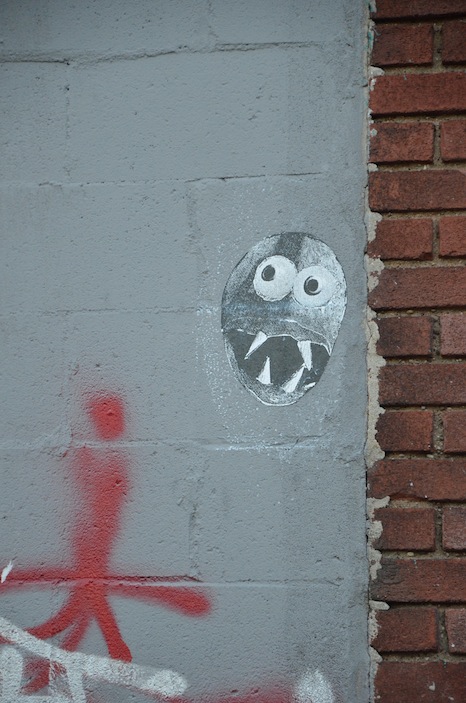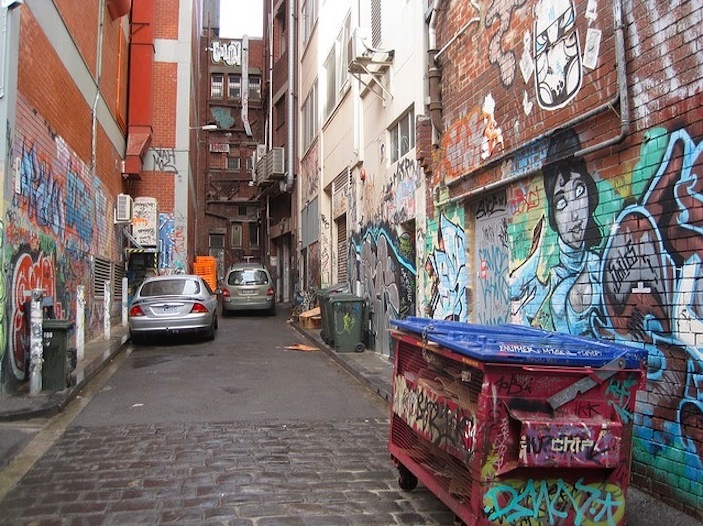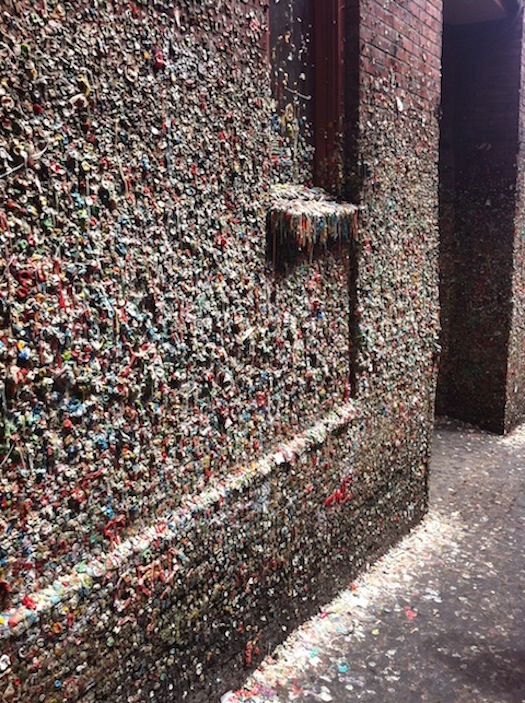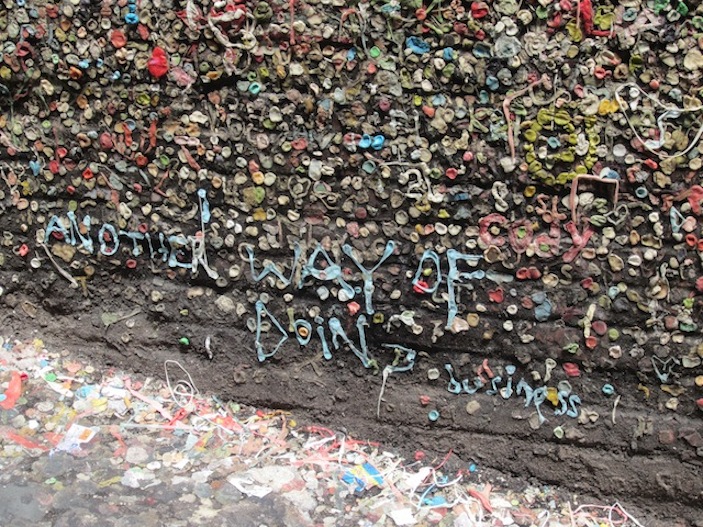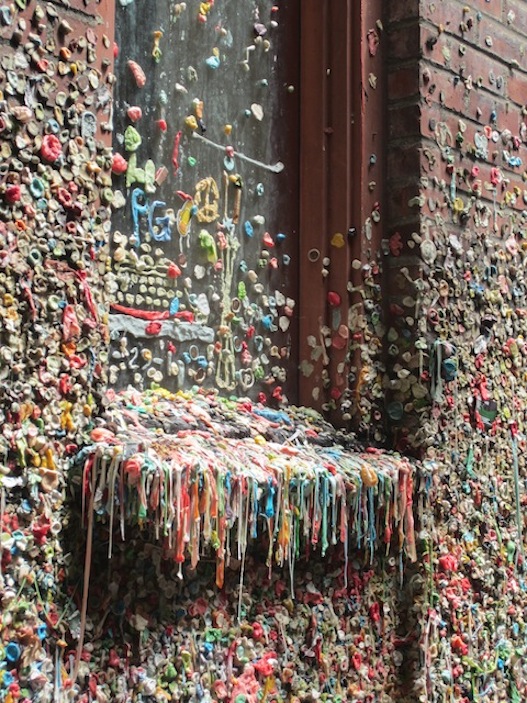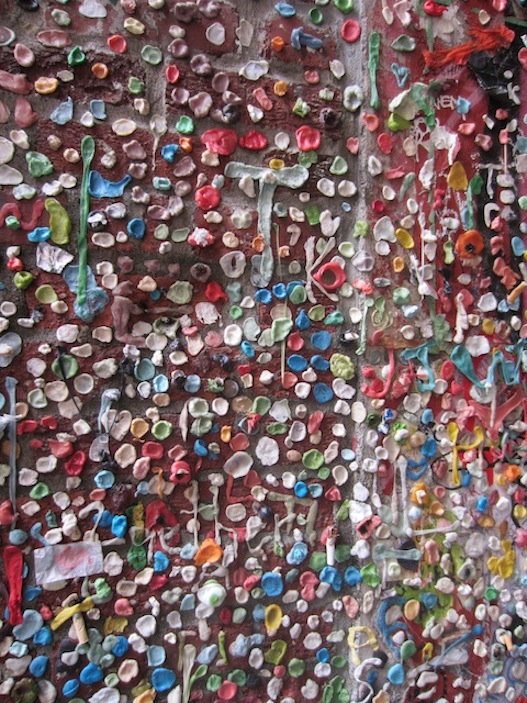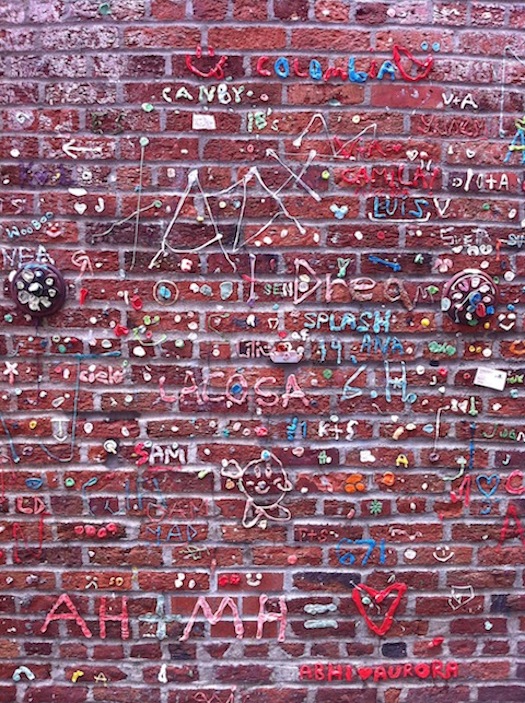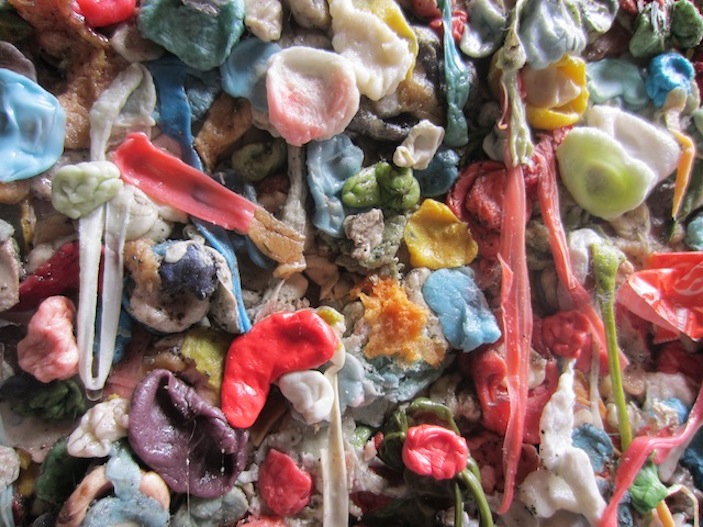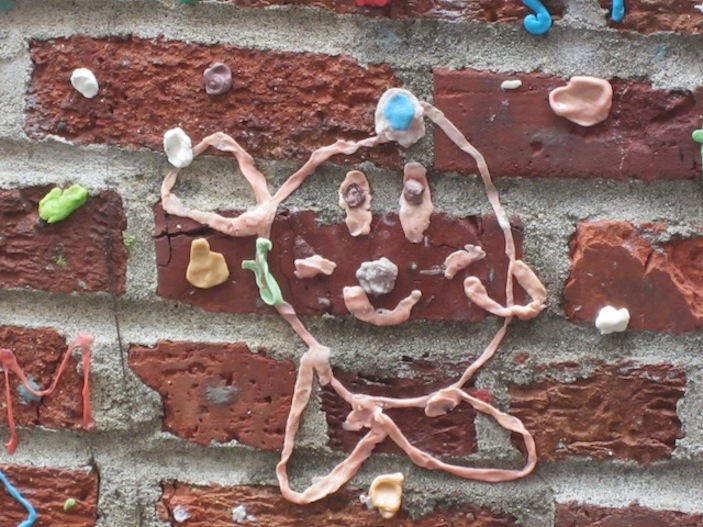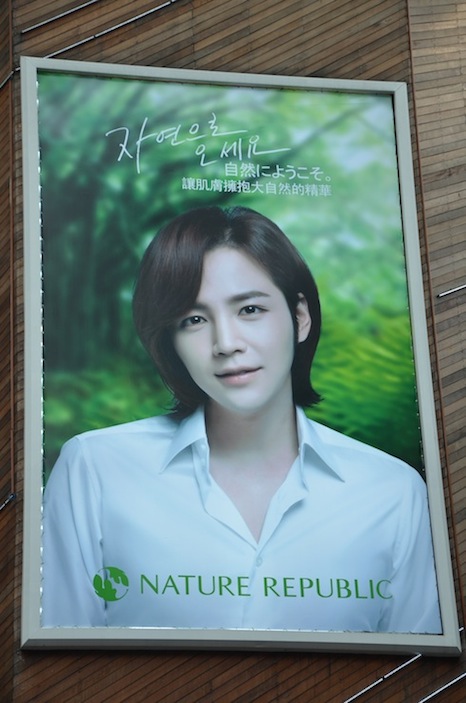Author Archive
IDnyc: Teeth Man
IDmelbourne: Colorful Alley
IDköln: Up, Down, S + U
El Clásico: The Biggest Game in the World
Rivalries exist throughout the sports world. America has its Yankees-Red Sox and its Duke-Carolina. England is where Manchester United and Liverpool, and Chelsea and Arsenal each tilt twice a year. And in South Africa, the Kaizer Chiefs-Orlando Pirates rivalry brings Johannesburg to a halt. Very rarely is the rivalry actually political, however, as is the case in Spain’s larger-than-life El Clásico, the 254th of which takes place today in the first leg of the semifinals of Spain’s Copa del Rey.
Not to overlook that the mutual quality of play is great—FC Barcelona and Real Madrid are almost always among the most talented and victorious clubs in the world—is the fact that each club also has a long association with differing politics. Barcelona has long represented the identity of its liberal home, Catalonia, while Real Madrid gained the reputation for being the “establishment club” during the Francoist regime in the middle of the 20th century. While this division has not always been so cut-and-dry, polls conducted even today show that Madrid’s followers tend to adopt more right-leaning views, while Barcelona’s are more closely aligned with the left-wing.
Adding to the hysteria, extremist political groups on both sides were born out of support for their beloved clubs, and went onto become known for hooliganism and violence. Ultras Sur, for example, was created in 1980 as a far-right Real Madrid group, while Boixos Nois started the following year as a far-left Barcelona group. In 2000, when former Barcelona star Luis Figo made his return to Camp Nou (Barcelona’s home stadium) as a Madrid player after a transfer, Boixos Nois threw a pig’s head at him. Other groups have followed, with one of the most violent of the Barcelona groups—the Casuals—having evolved into a full-fledged criminal organzation.
Feature film-worthy drama aside, there’s also football, with the teams squaring off twice a year in La Liga, and occasionally in other tournaments like Copa del Rey and UEFA’s Champions League. In total, the clubs have played 253 times, with Barcelona winning 105, Madrid 92, and 56 draws. Those numbers include “friendly” matches, though—of “competitive” matches (the Royal Spanish Football Federation has some convoluted logic as to what differentiates these two classifications), Madrid has won 88 times, Barcelona 86, with 46 draws. Conclusion: it’s pretty competitive between these two, even if there isn’t a clear-cut way to judge who has been more successful. That is why the rivalry is followed around the world, with one of its most anticipated showdowns—the 2002 Champions League semifinal—having been played to a worldwide audience of more than 500 million.
In case you miss today, you won’t have to wait long for the next one. The teams will play the second leg of the Copa del Rey semifinals on 27 February, and again the following week in La Liga.
IDseattle: The Sugary, Sweet, Grungy & Gross Gum Wall
Just as in business, tourist attractions need to differentiate themselves. Whether that is by being the tallest, smallest, prettiest or ugliest, being the “est” of anything is one way to earn notoriety. The other way is to offer something truly unique, and that applies to one of downtown Seattle’s landmarks: The Gum Wall.
It may not have the name recognition of the Space Needle, the first Starbucks or its neighbor, Pike Place Market. But every bit as unique as those, the brick wall adjacent to the Market Theatre has become a living gallery—of used chewing gum.
The wall began to earn its current appearance (and status) in 1993, when theatre patrons began sticking gum to the wall and placing coins in the gum wads for luck. On two different occasions, the theatre had the wall scraped clean, but the gum stickers were persistent. The theatre gave up, first out of frustration and then out of recognition that they could declare the wall a tourist attraction—and that’s exactly what it has become.
Today, the sticky, sugary art covers about 50 feet (~15 meters) of the wall, from the ground to a height of about 15 feet (5 meters). In some cases, the gum coverage is several inches thick, although I’m not sure who would want to be the one who finds out that sort of thing. Besides every color in the rainbow, the wall features several small works of art conjured up by creative chewers.
In many ways, the Market Theatre Gum Wall is Seattle, in all its grunge, dirt, artistry, beauty and creativity. Next time you’re downtown, pay a bit of homage to the wall if you wish, or better yet, leave your own mark on the annals of Seattle art.
IDparis: Push Button to Cross
Canadians Really Talk to Strangers?
“Hi, how are you doing?”
Waiting for the light to change so I could cross Burrard Street in downtown Vancouver on a quiet Tuesday morning, a voice of familiarity is the last thing I expected to hear.
I turned my head to the side, and it turns out it wasn’t a voice of familiarity at all. Instead, this complete stranger had said hello and asked me how my day was. Before I could comprehend what had just happened and gather the words to reply, the light changed and he was on his merry way.
This may be foreign to many of us, but it is common here in Canada. In this case, it was just two of us at the intersection, a situation that most of us try so hard to deny the reality of. We pretend that the other person isn’t there, bury our faces into our phones, and if the situation lingers long enough, it becomes totally awkward.
That doesn’t exist in Canada, where a simple greeting to a complete stranger who’s path we cross is nothing unusual. And certainly nothing to be threatened by, fearful of or looking to avoid. Perhaps another thing the rest of us can learn from!
Korea’s Warped Ideal of Beauty
For better or worse, looks matter in Korea. I mean, looks really matter. Regardless of where you go, you’ll see girls on the subway, in their cars, at a crosswalk, restaurant tables and anywhere else looking into the little tiny mirrors that seem to be customary cell phone compliments. If anything is out of place, it gets fixed, then and there. If anything is too out of place, well that’s just cause to break whatever had been on the day’s agenda and head home to get it sorted.
In a country that thrives on pressure, and even breeds it as a national sport, women always need to be on their “A” game. It’s too cold for that mini skirt? Wear some tights underneath. You will be walking a lot and don’t want to wear those stilettos? Tough, do it anyway.
Alarmingly, this pressure to appear perfect doesn’t stay limited to portable mirrors and choice of attire. Cosmetic surgery is so commonplace here that there seems to be a doctor offering it on every corner, and all of them stay busy. Conservative estimates suggest that half of women in their twenties have had some surgery done, in many cases several, and most anyone here knows that number is actually much higher. There is even such an obsession with angular-shaped faces here that cosmetic surgeons can essentially shave jawlines.
Eyelid surgery is most common, because Korean women all seem to be mortified that they don’t have a natural fold in their eyelids combined with a fascination for large eyes. But for women who have put on a few extra pounds, liposuction tends to be the preferred solution as opposed to exercise, and nose jobs are highly common as well.
I’m all for people doing what they wish to do with their bodies—want to cover it in tattoos? Do whatever makes you happy. The problem I have here in Korea, however, is that in spending enough time around these people, you get the sense that in most cases, the work that is done is not even necessarily because the girl herself wants it. Instead, she feels pressure from society, perhaps even subconsciously due to the importance put on the standard of ‘perfection’ here. Indeed, this is a country where photos are still attached to job or college applications, and most people believe that looks can be not only a deciding factor, but an absolute essential to even garner consideration.
What’s worse is that these unrealistic ideals are confirmed even in the home, where it is common for parents to pay for cosmetic surgery on their teenage girls. Can you imagine actually wanting your own child, the fruit of your loins, to be put under the knife because she isn’t good enough?
At some point, this has to stop if Korea is to continue its growth as a major player in the world economy. Pressure to be beautiful isn’t on the radar of human rights watchdogs yet, but at the rate Korea is going, it could soon be. Jobs and promotions are still won and lost based on willingness to perform sexual favors in this still male-dominated society, as the suicide case of actress Jang Ja-yeon, who was sexually abused by several entertainment executives, shed light on. Along those same lines, it was news recently when a local politician was quoted as telling a group of students that debate judges, of which he was one, “don’t really pay attention to the debate. They are actually interested in how participants’ faces look.”
Quite simply, the combination having males still highly dominant in this society, and the lack of any cultural theme that beauty comes in different shapes and sizes and colors, or is in the beauty of the beholder, makes for a potentially major social issue in Korea.
Don’t tell me what is or isn’t beautiful unless you want a smack in the jaw.
Diversity and Tolerance in Malaysia
One thing that always strikes me when I’m in Malaysia is the diversity. Walking around the streets of Kuala Lumpur, it almost feels like the city is equal parts traditional Malay, Chinese and Indian (statistically this is not true, of course, with a heavy skew towards Malay followed by Chinese). Of course, all of these are Malaysians, but these are the groups that make up the majority of the country.
But given the diversity that makes up this country, it never ceases to amaze me how intolerant the government is. This isn’t surprising given the country’s official classification as “Muslim”, but I am always intrigued when a country that is built upon and prides itself on diversity has such a one-sided stance on things. Homosexuality is still a crime in this country, as is sodomy, as demonstrated in the criminal case of former deputy Prime Minister Anwar Ibrahim.
As Malaysia continues to grow in economy and prosperity, it will be interesting to see how the political and religious views the government holds to will shift in light of a global influence. Here is to hoping that people living peacefully will be allowed and encouraged to pursue their individual happiness, regardless of what brings that.
.jpg)

